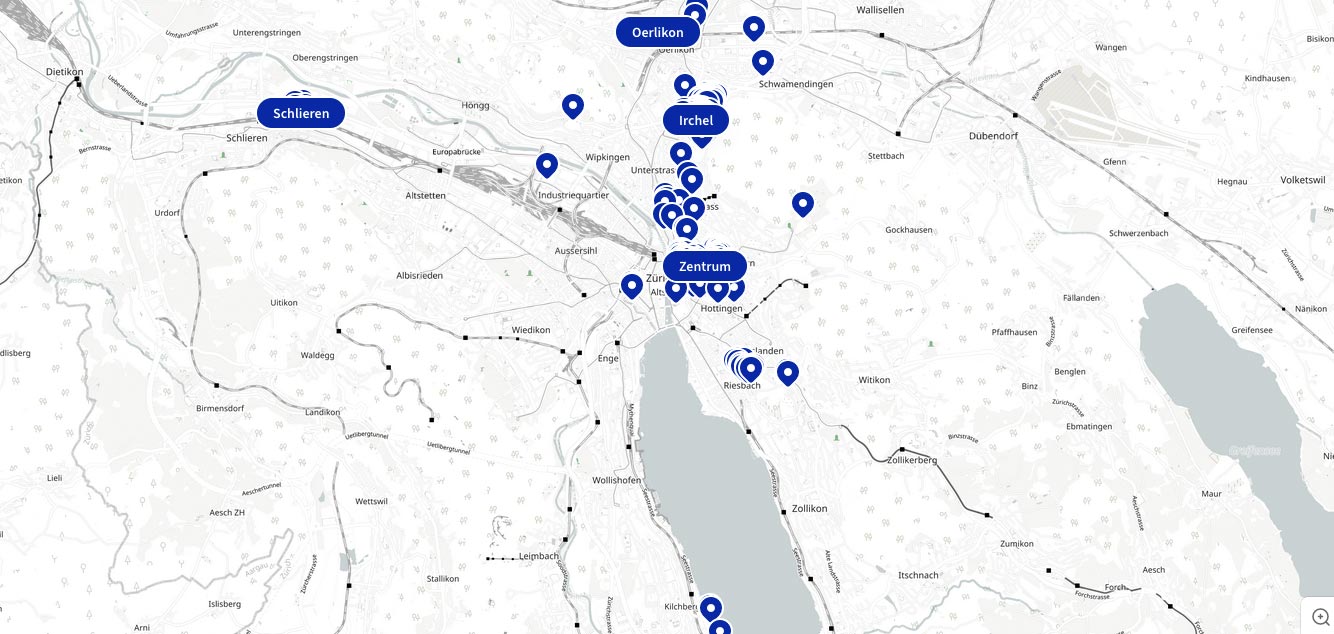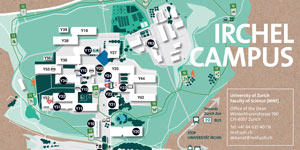Locations
Our research and teaching take place in the laboratories, lecture halls and offices on Irchel Campus UZH, in the center of Zurich, at the Botanical Garden and in Kilchberg, as well as at numerous research stations around the world – from the shores of Lake Zurich to the vast expanses of the Mongolian steppe, the unique Galapagos Islands, the icy wilderness of Greenland and the dense rainforest of West Africa.
Irchel Campus

Most departments of the Faculty of Science are located on Irchel Campus UZH. The Dean's Office and the Office of Student Affairs are also located here.
The campus is embedded in theIrchel Park, and theIrchel Nature Trail connects nature and science, the public and researchers. On 20 boards questions are answered: Starting with which animals and plants can be found in the park, to what is being researched in and around the park.
A detailed insight into our research is provided by theScience Pavilion UZH, the window to the research at the Faculty of Science.
Departments in the center of Zurich
Departments belonging to the faculty are also located in the center of Zurich. TheDepartment of Plant and Microbial Biology and theDepartment of Systematic and Evolutionary Botany, which also runs theBotanical Garden. The Department of Plant and Microbial Biology also maintains theLimnological Station in Kilchberg. In addition, theDepartment of Paleontology is located in the center as well as the Natural History Museum UZH which was founded by coalition of the four natural science museums of the UZH in 2024.
International Field Stations
International field stations of our faculty are the Kalahari Research Centre, the Monkey Mia Shark Bay, and the Nimba Chimpanzee Field Station. Field stations provide researchers with natural and protected research conditions and long-term access to research infrastructure and resources: UZH News article Researching in the Wild.
Kalahari Research Centre
For over 25 years we have been conducting field research and have been studying meerkats as well as other species in their natural habitat at the South AfricanKalahari Research Centre.
Prof. Dr. Marta Manser has been involved in the long-term studies from the very beginning and has been the head of the field research station since 2017. More than 10 international research teams from the fields of animal behavior, ecology, physiology, or genetics - totaling to over 400 researchers - are and have been involved in the research projects over the years.
Monkey Mia · Useless Loop · Western Australia
Shark Bay, the huge ocean bay off Western Australia, is part of the UNESCO World Heritage Site and, among other things, the habitat of dolphins.
They have been observed and researched there since 1982 – as part of the longest-runningdolphin research project in the world. Together with researchers from the USA and UK,Prof. Dr. Michael Krützen is leading this research effort.
Nimba Chimpanzee Field Station
The Nimba Mountains in Guinea (West Africa) are home to wild chimpanzees. In this UNESCO World Heritage Site, our faculty maintains the only truly mountainous chimpanzee research station in Africa.
The Nimba Chimpanzee Project was founded in 2003 byProf. Dr. Kathelijne Koops and her research group (Ape Behaviour & Ecology Group) studies thebehavior and ecology of wild apes here.




